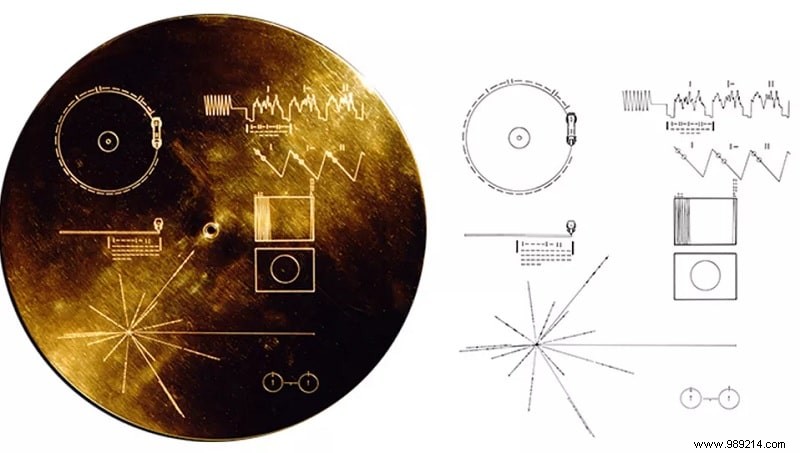Communicating with extraterrestrial civilizations is an old dream of science fiction writers, yet scientists have been trying hard to establish communications over the past few decades. If for the moment we have no clues concerning the potential existence of extraterrestrial intelligent life, astrophysicists continue to send messages in the hope of obtaining an answer one day. But what were these messages?
In the early 19th century, Austrian astronomer Joseph Johann Von Littrow proposed that humans would dig trenches configured in vast geometric patterns in the Sahara Desert, fill them with kerosene, and light them. The idea was to send a clear message to extraterrestrial civilizations living elsewhere in the Solar System:we are here.
Von Littrow never saw his idea come to fruition. Yet, long after coming up with his ambitious plan, we have not stopped our attempts to contact possible intelligent extraterrestrial life. So what messages did we send to the extraterrestrials? The radio has updated this quest for communication. In 1962, Soviet scientists pointed a radio transmitter at Venus and greeted the planet in Morse code.
This introduction, the first of its kind, included three words:Mir (Russian for “peace” or “world”), Lenin, and SSSR (the acronym in the Latin alphabet for the Cyrillic name of the Soviet Union). The message was considered largely symbolic, according to a 2018 article published in the International Journal of Astrobiology . First and foremost, it was a trial run for a brand new planetary radar, a technology that sends radio waves into space, with the primary purpose of observing and mapping objects in the solar system.
In terms of distance, the next attempt was much more ambitious. In 1974, a team of scientists, including astronomers Frank Drake and Carl Sagan, transmitted a radio message from the Arecibo Observatory in Puerto Rico to Messier 13, a star cluster about 25,000 light-years away. The image, sent in binary code, depicted a human, a DNA double helix structure, a model of a carbon atom, and a diagram of a telescope.
“The Arecibo message attempted to provide insight into who we are as human beings in the language of math and science says Douglas Vakoch, psychologist and president of Messaging Extraterrestrial Intelligence (METI). Arecibo's message was, quite literally, a shot in the dark. It takes about 25,000 light years to reach Messier 13; and the star cluster is moving in the meantime, according to the Cornell University Department of Astronomy.

Hypothetical aliens might still be able to detect the signal as it passes; it has 10 million times the intensity of radio signals from our sun (the sun emits a broad spectrum of electromagnetic radiation, from ultraviolet to radio waves). But that's unlikely, says Seth Shostak, an astronomer at the Research Institute for Extraterrestrial Intelligence (SETI).
More recently, radio has been used to transmit everything from art to advertisements. In 2008, Doritos broadcast its own ad to a solar system in the constellation Ursa Majoris, about 42 light-years away, according to the International Journal of Astrobiology article. . In 2010, a message written in Klingon, a language used by fictional aliens in the Star Trek universe, invited real aliens to attend a Klingon opera in Holland.
We have not relied solely on radio waves to communicate; we have also launched spacecraft containing artifacts from Earth, in the hope that they will eventually be collected from interstellar space by intelligent lifeforms. The Voyager 1 and 2 probes were launched in 1977 to explore the far reaches of our solar system and interstellar space. Each carries a gold disc containing music, ambient Earth sounds and 116 images of our planet and the Solar System.

Voyager probes continue to traverse interstellar space, waiting to be discovered. But the odds of that happening? “Zero. It was just a beautiful and poetic, charming and courageous attempt that really summed up the best of us, even if it's useless in terms of communication says Sheri Wells-Jensen, a linguist at Bowling Green State University in Ohio who specializes in extraterrestrial intelligence.
Experts agree that the likelihood of any of these attempts reaching extraterrestrial civilizations is very low. This outcome depends, of course, on whether or not extraterrestrial life exists in our star system. But this life in question should also listen carefully to radio signals and understand enough math and science to interpret our messages. Finally, the messages we sent tend to assume that these extraterrestrials perceive the Universe the same way we do:with hearing and vision, which may not be the case.